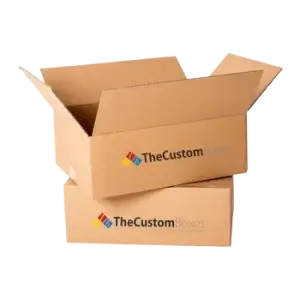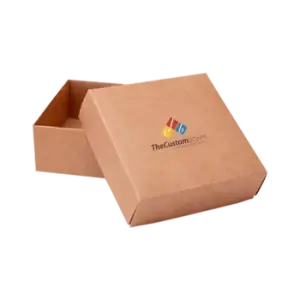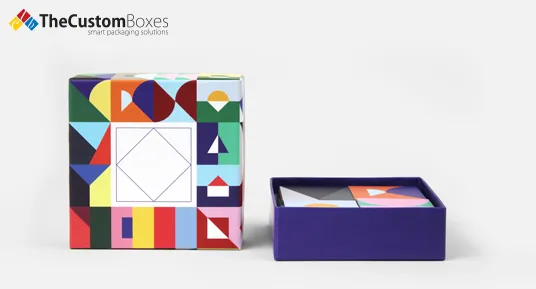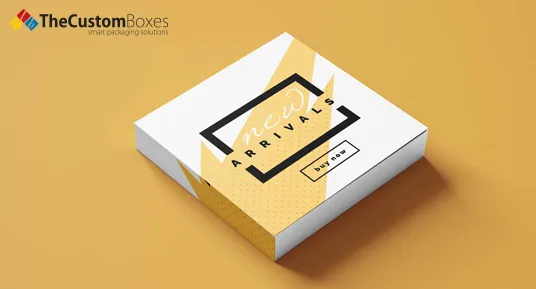Understanding Paperboard Grades:
Which One is Right for Your Packaging?
Unsure which paperboard grade is right for your packaging? Check out our latest blog, where our experts break down the best paperboard options and help you choose the perfect one for your product. Get all the insights you need to make the best choice for your packaging.

Packaging is now a crucial part of many businesses, including food, beverage, pharmaceuticals, and retail. Choosing the right packaging material is essential to ensuring that goods reach customers safely. In addition to being protective, the packaging should adhere to the brand's aesthetic and branding objectives. Paperboard is a versatile packaging material made from various pulps and fibers. It comes in different types to meet a wide range of needs. In this article, we are going to discuss the primary varieties of paperboard. We will also explore their uses and versatility in custom box paper packaging.
Paper Grade: What Does It Mean For Your Packaging?
Picture yourself holding a box that has a smooth, robust feel. The paper grades used to make that box are likely working their magic. Paper grade classifies paper based on its surface quality, strength, and durability. Each grade is designed for specific applications. Each grade is designed for specific purposes. It is like picking the perfect fabric for your outfit. Just like you wouldn't use thin paper for hefty product packaging paper, you wouldn't use silk for jeans. Key paper grades include CCNB, FBB, SBS, CUK, and Corrugated Fiberboard. Each offers unique features for different packaging needs. All provide a special combination of printability, sustainability, and strength.
Choosing The Perfect Paper Grades For Flawless Packaging
Paper grades are categorized according to their distinct qualities and attributes, which make them appropriate for particular packaging requirements. Let's examine various types of paper grades in more detail:
Corrugated Board

Three layers make up this kind of packing material. Two exterior flat layers of liner board and a central layer of fluted (corrugated) paper. Shipping boxes, exhibition stands, and other packaging solutions frequently use corrugated boards because of their exceptional shock-absorbing qualities. Depending on the flute size, the corrugated board can weigh anywhere from 150 gsm to more than 500 gsm and have a thickness of 0.5 mm to 6 mm.
Ford Paper & Ivory Paper

These paper types have a smooth, silky surface and are created from chemical wood pulp. They are frequently used to package expensive products like watches, jewelry, and other luxuries. Ford paper has a weight range of 200 gsm to more than 400 gsm and a thickness of 0.2 mm to 0.5 mm.
Kraft Paper

Known for its exceptional strength and resilience, this paper type is perfect for heavy-duty packaging like kraft paper boxes and bags. Made from wood pulp, it is naturally brown, but it can be bleached to make it look white. Kraft paper has a weight range of 40 gsm to more than 200 gsm and a thickness of 0.1 mm to 0.6 mm.
Couche Paper

This paper board grade of coated paper is frequently used to package expensive goods including clothing, electronics, and other luxuries. It can weigh between 90 and 200 grams and has a smooth, glossy surface. Its thickness ranges from 0.1 to 0.3 millimeters.
Paperboard

This type of paper is perfect for high-end packaging like business cards, folders, and product boxes since it is thicker and more durable than regular paper. It is available in many finishes, with thicknesses varying from 0.3 mm to 1 mm and weights ranging from 200 gsm to over 400 gsm.
SBS Board

This is a solid bleached sulfate board, which is composed of chemical pulp that has been bleached. Its smooth, white surface makes it ideal for food and cosmetic packaging. This paper grade is often used for high-end products that require a more luxurious look. SBS board comes in a variety of thicknesses from 0.2 mm to 0.5 mm and weights from 180 gsm to more than 500 gsm.
FBB (The Folding Box Board)

This type of paper is known for its excellent bending stiffness. It’s commonly used to package high-end products like electronics, chocolates, and perfumes. Its thickness ranges from 0.2 mm to 0.4 mm, and its weight can vary from 180 gsm to over 300 gsm. Its surface is white.
Bristol Paper

This cardboard packing material is renowned for its outstanding printing capabilities. It is frequently used for business cards, postcards, book covers, and other premium print materials and is available in a variety of colors, textures, and finishes. Bristol paper comes in thicknesses of 0.1 mm to 0.3 mm and weights between 100 gsm and 300 gsm.
Decal Paper

This is an ideal paper for packing goods that need unique labels and graphics because it is made especially for use with decals. Its thickness ranges from 0.1 mm to 0.3 mm, and its weight can vary from 100 gsm to 200 gsm. Its surface is white.
Newsprint

This is one of the best paper types and is frequently used to print newspapers and other periodicals, as the name implies. Compared to other grades, it is lighter and thinner because of its low gsm of about 35 to 55. Newsprint has a thickness range of 0.05 mm to 0.1 mm.
Clay Coated News Board Or CCNB

This is a paper packaging material that resembles SBS board but has a glossy clay coating on one side. Cosmetics, beauty items, and other consumer goods are frequently packaged with it. CCNB has a weight range of 200 gsm to more than 400 gsm and a thickness of 0.3 mm to 1 mm.
Businesses can select the best types of cardboard for their packaging needs thanks to the wide range of paper grades available. Paper grades are essential to designing the ideal packaging solution, whether it is for usefulness, durability, or aesthetics. In order to make an informed choice the next time you're selecting paper for your packaging requirements, take into account these different types of paper grades and their distinctive qualities.
Top Tips For Choosing The Perfect Paper Grade For Packaging
When choosing various types of packaging paper grades, bear the following extra points in mind:
Experiment With Paper Grades: Find The Perfect Fit
Test samples of each grade and evaluate their performance to find the one that best suits your needs. This will enable you to observe directly how each grade responds to various circumstances.
Consider Transportation & Storage: Choose The Right Paper Grade
The weight, temperature, and humidity of the goods being packaged can all affect the paper grade selection. When selecting a choice, don't forget to take these factors into account.
Plan For The Future: Select A Paper Grade That Endures
Take into account the possible long-term impacts before selecting a paper grade only on the basis of price. Poor paper packaging may lead to broken goods or unfavorable consumer opinions, which would eventually hurt sales and profits.
Consult With Suppliers: Get Expert Paper Grade Advice
As professionals in their domains, packaging material suppliers provide insightful advice on the ideal paper grades for your goods. Never be afraid to ask them for advice. The Custom Boxes is the top packaging and printing press that is a partner in the success of many famous brands. So collaborate with them to use ideal paper grades.
Choosing the right packaging material is essential for the success of your brand. Thus, businesses can choose the best paper quality for their packaging requirements by taking these suggestions into account.
Final Thoughts
To sum up, choosing the appropriate paper grades for ideal packaging is crucial to guaranteeing the integrity, appearance, and security of your goods. You can choose packaging that meets your needs and ideals by being aware of the many aspects covered in this book, such as sustainability, printability, strength, and durability. There is a paper grade that meets your needs, whether you're packing heavy, fragile, or perishable goods. Keep in mind that selecting the appropriate paper quality can improve the perception of your company, lessen its negative effects on the environment, and eventually lead to a satisfied consumer. I hope this guide proves to be a useful tool for you as you search for the ideal packaging solution.

















